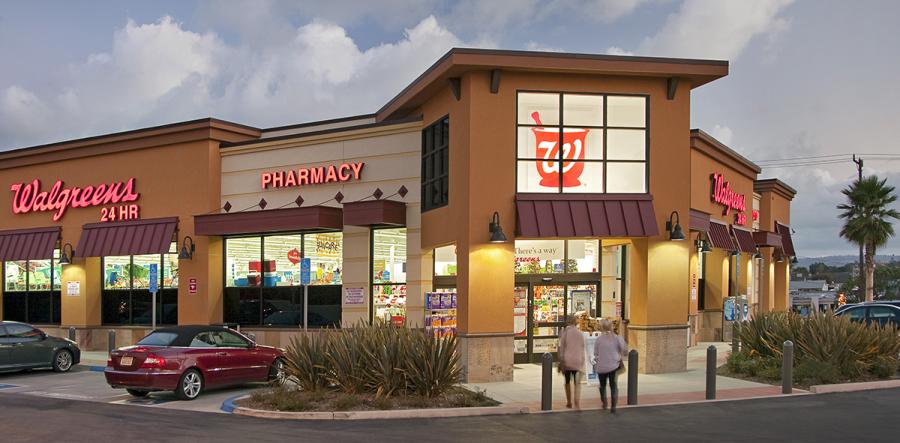
Plugging Into the Grid
Energy grids are facing unprecedented disruption due to the transition to renewables, electrification trends, extreme weather, and the impacts of climate change. The infrastructure required to support mass electrification will require more demand for energy, which could compete with needs to decarbonize the current built environment as much as possible. The power curve has fundamentally changed, including the resulting impacts on both energy costs and reliability for businesses nationwide. Because experts estimate nearly 40 percent of today’s global carbon dioxide emissions come from buildings, they are the greatest, most cost-effective opportunities for reducing carbon footprints and ensuring a sustainable energy future.
While energy efficiency behind the meter isn’t a new concept for commercial real estate developers, owners, and operators, most efforts to go beyond that and enable buildings to play a more active role in grid stability have focused on the residential sector through smart thermostats and, in larger buildings, heavy controls systems and manual demand response. Utility programs targeting sectors are generally easier to develop and repeatable because energy needs, standards, and incentives are already outlined.
These approaches are not the case for smaller commercial buildings, which are historically underrepresented in energy programming because the needs of each building site and business type vary widely. A more customized approach is required to address those challenges, leaving millions of smaller commercial buildings largely overlooked and left with a one-way connection to the grid. According to the U.S. Energy Information Administration, of the over 5.9 million commercial buildings across the U.S., 90 percent have a footprint under 50,000 square feet. That leaves 5.3 million potentially inefficient, small- to medium-sized commercial buildings — a major gap with incredible potential to strengthen the grid while also reducing energy costs for businesses. To close the gap, owners and operators must transform the way they operate these buildings by incorporating new technologies and partnering with their utilities to create a more dynamic relationship between energy producers and consumers.
Because experts estimate nearly 40 percent of today’s global carbon dioxide emissions come from buildings, they are the greatest, most cost-effective opportunities for reducing carbon footprints and ensuring a sustainable energy future.
Rising costs, energy mandates, electrification, and more prevalent power disruptions — as seen recently in California and Texas — are all trends putting energy transition at the forefront of business stakeholder priorities. Being proactive about an energy strategy isn’t just best practice, it’s becoming increasingly required for power reliability and business continuity. We are finally at the tipping point where business and grid priorities are beginning to converge. By transitioning operations to be more efficient and enabling grid-interactivity, commercial real estate professionals are benefiting both their bottom line and the grid at the same time.
The Future Is Grid Interactive
The future of energy is one where buildings are optimized individually, networked together, and connected to the grid. This bidirectional communication enables the built environment and utilities to work together to balance supply and demand. Grid interactivity unlocks the potential of standalone buildings and turns them into efficient, flexible energy resources using smart technology.
Energy usage has traditionally been a linear purchase of power over the grid based on a building’s energy requirements. These requirements are influenced by the energy consuming assets within the building, complex maintenance systems, weather trends, and building occupancy. When smart controls, building assets, and the grid are connected via smart devices, operators can control energy demand in response to various signals, measure usage patterns across sites, and leverage investments in distributed energy sources to improve efficiency, lower costs, unlock new revenue streams through grid services, and operate more sustainably.
For utilities, it means ample on-demand capacity to stabilize the grid during emergencies or times of peak energy demand. For businesses, it means lower energy and operational costs and more resilient buildings ready to withstand long-term energy infrastructure changes. Utilities are more commonly incentivizing their commercial customers to engage in grid-interactive programs, like demand response, through additional credits or rebates — creating an even larger business case to tap into grid interactivity.

To reduce power usage across its 9,000 locations, Walgreens has integrated demand response programs to improve efficiency and reduce waste.
For example, Walgreens has committed to reducing its carbon footprint across more than 9,000 locations and offers a look at how this is already working. Since 2009, together with GridPoint, Walgreens has reduced emissions by over 80 million kWh annually; the company participates in demand response programs across various geographies, ensuring essential zones, like the pharmacy, functioned normally during the height of the pandemic. Walgreens receives incentives from utilities for locations enrolled in demand response programs and further reduces energy costs by altering its energy demand at times to avoid peak pricing. However, the true value of these grid-interactive locations was demonstrated in August 2020 when extreme heat and high energy demand caused rolling blackouts across California. Because Walgreens already had a demand response process in place, it was able to voluntarily reduce the energy demand at locations in impacted geographies instantaneously in response to emergency grid signals, helping to stabilize the grid and avoid further power disruptions.
Those managing and operating the built environment need to balance maintaining day-to-day operations with finding solutions that offer immediate, measurable savings and sustainability outcome.
For your buildings to be grid-interactive, you must have technology that does three things. First, you must have hardware inside the building to capture real-time data and enable automated building controls. Every building profile is different, and capturing the right data for each building is essential — meaning equipment-level data from HVAC, lighting, refrigeration and other high-energy consuming assets, overall building performance data, historical data, weather information, and utility grid status. These are all key pieces of intelligence needed to provide visibility into complex building operations. Second, it must provide automated, bidirectional communication with your utility through utility programs like demand response. Third, it must integrate with existing and emerging distributed energy resources (DERs) for increased long-term value. Maybe your business is already looking into deploying EV chargers or energy storage systems at various assets. These integrations make DERs and existing assets in a building work in sync to leverage your buildings as a grid resource without impact to occupant comfort or business operations. As more DERs become commercially practical, like battery storage, this grid-interactive technology can serve as the gateway to deploying it cost effectively. Technology that can do these three things can bridge the gap between utilities and commercial buildings to orchestrate equipment within the building in response to grid signals and drive whole-building decarbonization.
Focusing on Energy Sustainability
Those managing and operating the built environment need to balance maintaining day-to-day operations with finding solutions that offer immediate, measurable savings and sustainability outcomes — all without impacting business continuity and on-site comfort.
Capital-intensive technology and limited internal bandwidth have been core challenges. As-a-service pricing subscriptions, utility incentives, and automation, however, are removing barriers, making it easier than ever to deploy grid-interactive technology.
As the transition to cleaner power sources and electrification continues, more automated virtual capacity will be needed on demand to avoid costly and dangerous power disruptions. By going grid-interactive, businesses can achieve energy and cost-reduction goals and support the grid today, creating a foundation that can be built upon and integrated with new, cleaner technologies. In short, a sustainable future is not possible without first making buildings better — and commercial buildings are uniquely positioned to accelerate the energy transition today.
Mark Danzenbaker
CEO of GridPoint. Contact him at support@gridpoint.com.






